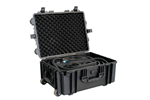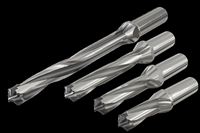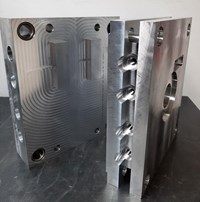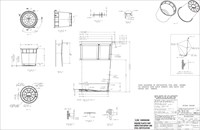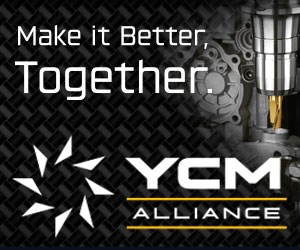Three Ways to Deliver Accuracy, Efficiency and Profits
A cloud-based ERP provider shares three ways that improved visibility can help small manufacturing operations leaders deliver accuracy, efficiency and better profits for the manufacturing team.

Kelly Cabatuan from KeyedIn Solutions, Inc. shares three ways that improved visibility can help you deliver accuracy, efficiency and better profits for your manufacturing team.
Agility for managing schedules and jobs. Your ability to deliver often rests on agility. And nothing is less agile than a production system that depends on decision makers harvesting information from disparate sources: Conversations with the shop floor, emails, white boards and hastily scrawled notes. Can we move up delivery two days on an in-process job? Can we deliver four more units in the same window on a different job—with my foreman on vacation? Not being able to quickly see how changes in delivery, materials and time impacts the whole picture can quickly tie you in knots.
Real-time job costing. A single view of resource use – particularly on the shop floor — means fewer rush jobs, fewer mistakes and more efficient overall operation. When you can see exactly who is doing what — and which resources they’re using — you bring laser accuracy to capacity planning and give yourself the ability to anticipate the next bend in the road by adjusting personnel allocation. That’s the first payoff, which partially ties into the agility issue mentioned above. Secondly, when the shop floor team can record time and materials directly into the core system, you’re always on top of your budget thresholds. Which makes you the kind of ops leader every small- or mid-sized manufacturer wants: a profit enabler.
Getting a centralized location for job-related information. Many manufacturers are still working with different systems that require double entry – duplicating effort and increasing the risk of manual error. In response, they introduce labor-intensive processes, further increasing the effort. A single system for the entire operation means once a task is flagged complete, it can automatically help the business move to the next stage, generating paperwork and alerts as required. For example, when an estimate is approved, a sales order is automatically created; when production is finished, shipping is alerted and can spring into action.
Automating simple, essential transactions helps tie your operations together, optimize production, and free you to solve more interesting problems—ones that transports the manufacturing ops leader from “putting out fires” mode to “lean costs, happy customers and growing the business” mode.
Related Content
-
Leading Mold Manufacturers Share Best Practices for Improving Efficiency
Precise Tooling Solutions, X-Cell Tool and Mold, M&M Tool and Mold, Ameritech Die & Mold, and Cavalier Tool & Manufacturing, sit down for a fast-paced Q&A focused on strategies for improving efficiencies across their operations.
-
MMT Chats: Marketing’s Impact on Mold Manufacturing
Kelly Kasner, Director of Sales and Marketing for Michiana Global Mold (MGM) talks about the benefits her marketing and advertising, MGM’s China partnership and the next-generation skills gap. This episode is brought to you by ISCAR with New Ideas for Machining Intelligently.
-
ICYMI: MMT Chats: True Leadership Leads to Mentoring, Part 1
This trio from TK Mold and Engineering in Romeo, Michigan, joins me to discuss the role of leadership and culture in mentorship. This episode is brought to you by ISCAR with New Ideas for Machining Intelligently.



